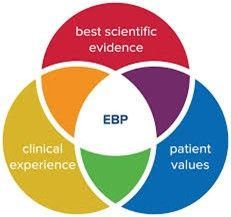Four Ways to Reduce Adolescent Hospitalizations
Inpatient hospitalizations are always a factor with high-risk youths, but they can be reduced.
Behavioral health organizations supporting adolescents encounter various challenges, particularly in community settings. Federal legislation like the Family First Prevention Services Act allocates funds to keep youths out of residential facilities. Although emphasizing community support for at-risk youths is a positive shift, it does not always address the crucial need for safety, preventing the risk of self-harm or harm to others.
Foster youth, those with trauma histories, and those struggling with substance abuse or mental health issues tend to require hospitalization more frequently. Many find themselves in a cycle of quick inpatient care for stabilization, only to return home and then back to the hospital shortly afterward. This cycle negatively impacts the youth, their families, and the community. Lacking the stability they need, these youths start to see themselves as “dangerous” or “damaged,” feeling out of control.
However, minimizing hospitalizations is an achievable goal. Organizations and staff can keep high-risk youths at home and out of the hospital with the right skills, training, and strategies.
How can this be achieved? Here are four strategies that you, as behavioral health professionals, social workers, and caregivers, can implement to reduce adolescent hospitalizations:
1. Involve staff with lived experiences in the treatment process. Parent partners create immediate positive impacts by engaging parents in treatment and listening to their concerns. They become active participants, not just passive observers. Peer partners assist youths in managing their behaviors, drawing from personal experiences of crises and emotional shifts. These connections with peer support staff significantly reduce hospitalizations.
2. Ensure youths on psychotropic medications adhere to their prescriptions. Proper medication can help youth overcome biochemical imbalances, reducing anxiety and stabilizing mood fluctuations. Cases often arise where a parent is advised that their child needs medication, yet they discontinue its use when the child complains or forget to renew it when it runs out. This lapse can lead to hospital visits when the youth struggles with self-control. Discussing any medication concerns should be directed to the psychiatrist rather than abruptly ceasing treatment.
3. Role-play with parents, caregivers, and youth to develop necessary skills. Equip both parents and youths with techniques to de-escalate potential crises. Typically, parents notice when their adolescent is nearing a crisis, recognizing signs, triggers, and cues but often feeling powerless without the right tools. By instructing the parents on handling crises, de-escalating anger, and guiding the youth towards calming techniques, such as deep breathing, they can manage the emotional turmoil more effectively.
4. Acknowledge the impact of trauma on hospitalizations. Triggers or flashbacks may provoke youths to seek relief from their distress. Under stress, individuals commonly experience fight-or-flight reactions or a desire to numb their pain, particularly trauma survivors. When triggered, they may respond with anger towards themselves or others. Staff or parents can assist youths in processing their feelings by naming emotions, reminding them that feelings are temporary, and providing calming strategies, like controlled breathing. These skills help youths gradually integrate traumatic experiences, reducing their future impact.
By learning and implementing these new skills, you, as staff and parents, play a crucial role in keeping high-risk youths safe at home.




